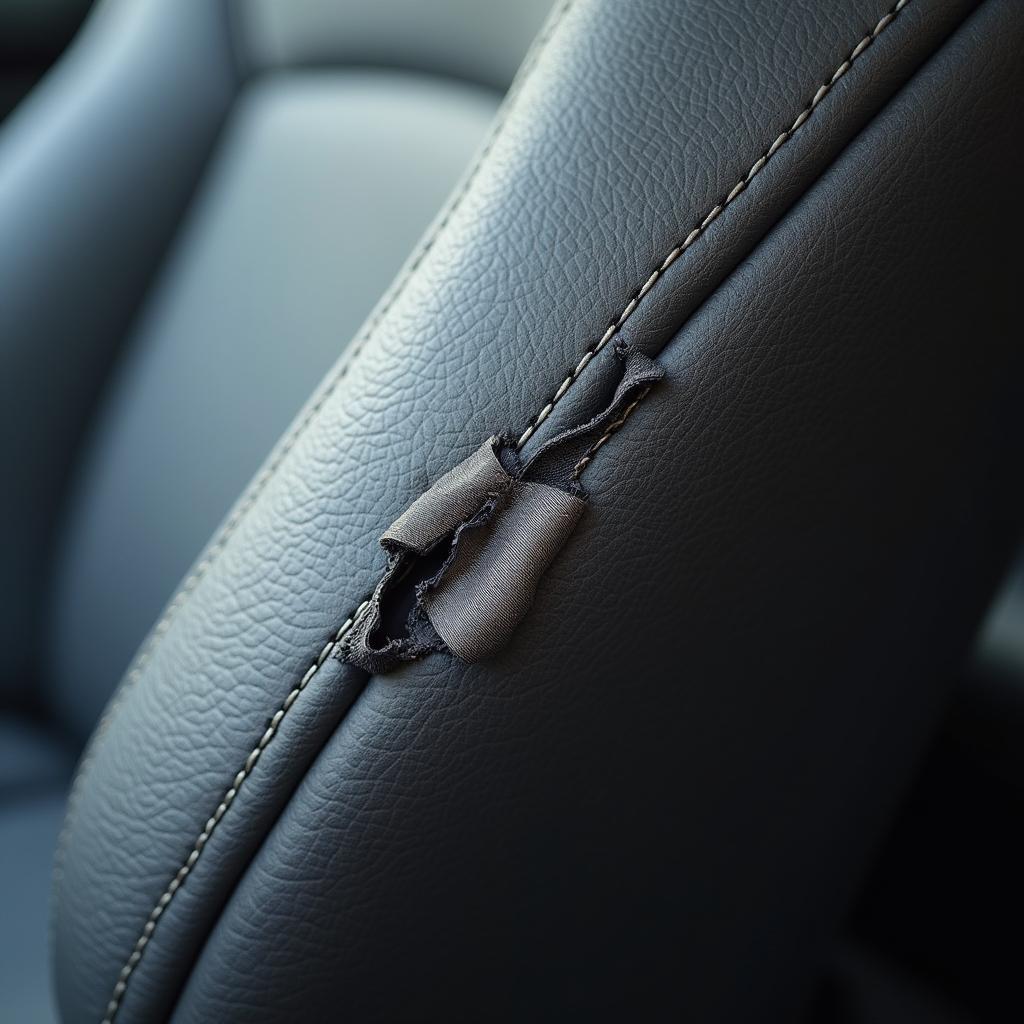Discovering a tear in your cloth car seat can be frustrating. It not only affects the aesthetics of your car’s interior but can also decrease the resale value of your vehicle. Fortunately, repairing a tear in a cloth car seat is often a manageable DIY project that can save you a significant amount of money compared to professional upholstery services. This guide will equip you with a comprehensive understanding of how to repair a tear in a cloth car seat, allowing you to restore your car’s interior to its former glory.
Assessing the Damage: What You Need to Know
Before diving into the repair process, it’s crucial to assess the severity of the tear in your cloth car seat. The size and location of the tear will determine the best course of action and the materials you’ll need.
For instance, a small, clean tear can be easily fixed with a fabric repair kit, while a larger, more complex tear may require patching or even professional intervention. If the tear is located in a high-stress area like the driver’s seat, opting for more durable repair methods is essential to ensure the longevity of the fix.
Gathering Your Supplies: Tools for the Task
Once you’ve assessed the damage, it’s time to gather the necessary supplies. The tools you’ll need depend on the repair method you choose, but here’s a general list:
- Fabric Repair Kit: This typically includes a bonding agent, a backing fabric, and an application tool.
- Scissors: Used for trimming loose threads and cutting patches.
- Tweezers: Useful for precise handling of fabric and patches.
- Matching Fabric Scrap: If patching is necessary, a fabric scrap that closely matches your car seat’s material is crucial for a seamless look.
- Iron and Ironing Board: Used to heat-seal certain types of fabric repair patches.
Repair Methods: Choosing the Right Approach
Depending on the size and location of the tear, several repair methods can effectively address the issue:
1. Using a Fabric Repair Kit: The Quick Fix
For small tears and snags, a fabric repair kit is your go-to solution. These kits utilize a strong adhesive to bond the torn edges together, creating a nearly invisible repair. Here’s how it works:
- Clean the area around the tear with a mild cleaner and let it dry completely.
- Cut a piece of the backing fabric from the kit slightly larger than the tear.
- Apply a thin layer of the adhesive to the back of the tear and the backing fabric.
- Carefully align the backing fabric over the tear and press firmly.
- Allow the adhesive to dry completely according to the manufacturer’s instructions.
2. Patching the Tear: A More Durable Solution
how to repair – large tear in cloth car seat
Larger tears often require a patching approach for a more robust and lasting repair. This involves attaching a fabric patch to the underside of the torn area, providing structural support and a seamless appearance.
- Choose a fabric scrap that closely matches your car seat’s material and cut it to a size slightly larger than the tear.
- Apply fabric glue to the edges of the patch and carefully position it underneath the tear.
- Ensure the patch lies flat and smooth against the underside of the car seat fabric.
- Allow the glue to dry completely before applying any pressure to the repaired area.
“Choosing a fabric that blends seamlessly with your car’s interior is crucial for a professional-looking repair,” advises John Miller, a seasoned automotive upholstery expert with over 20 years of experience. “Take your time to find a matching fabric scrap, or consider purchasing a small amount from an upholstery supplier.”
3. Professional Upholstery Repair: When to Seek Expert Help
While DIY methods can effectively address many cloth car seat tears, some situations warrant professional intervention.
If you encounter any of the following, seeking professional upholstery repair is recommended:
- Extensive damage: Tears that are very large, complex, or located in high-stress areas might require professional expertise.
- Airbag deployment: If the tear is a result of airbag deployment, it’s crucial to consult a professional to ensure the seat’s structural integrity and safety features are intact.
- Valuable or classic cars: Entrusting the repair of valuable or classic cars to professionals ensures the preservation of their value and authenticity.
Preventing Future Tears: Proactive Measures
Once your car seat tear is repaired, taking preventative measures can help protect your investment and prevent future damage:
- Regular Cleaning: Routine cleaning with a gentle upholstery cleaner can prevent dirt and grime from weakening the fabric fibers.
- Seat Covers: Investing in quality seat covers offers an extra layer of protection against wear and tear, spills, and UV damage.
- Careful Entry and Exit: Avoiding sliding across the seat with sharp objects in your pockets can significantly reduce the risk of accidental tears.
Conclusion: Restoring Your Car’s Interior
where do you go for car seat repair
Repairing a tear in a cloth car seat doesn’t have to be a daunting task. By understanding the different repair methods, gathering the right supplies, and following the proper techniques, you can restore your car’s interior and prolong the life of your car seats. Remember to assess the damage carefully and choose the repair approach that best suits your needs. For extensive damage or concerns about safety features, seeking professional upholstery repair is always the safest and most reliable option. By taking proactive steps, you can maintain the pristine condition of your car’s interior for years to come.



